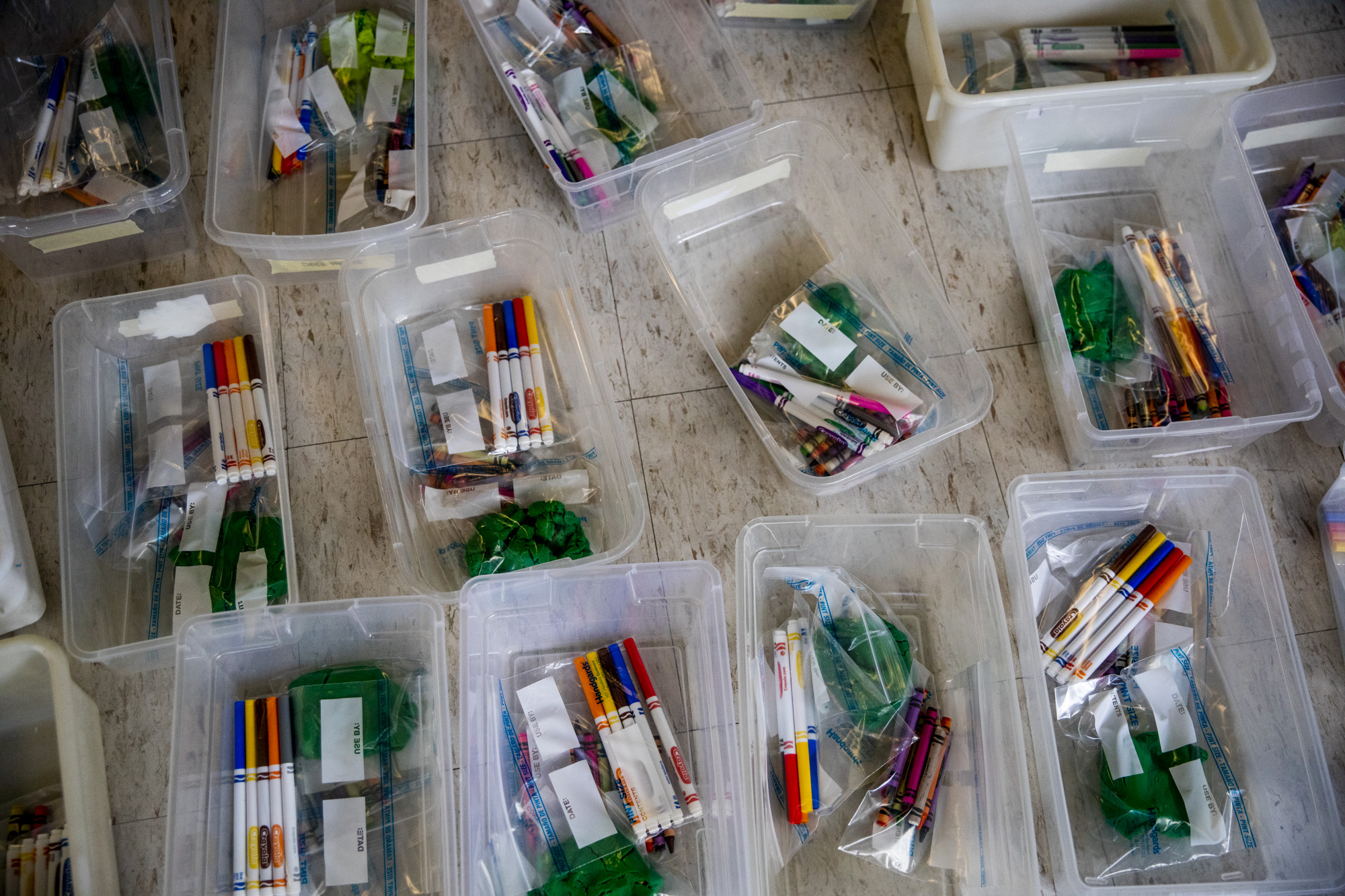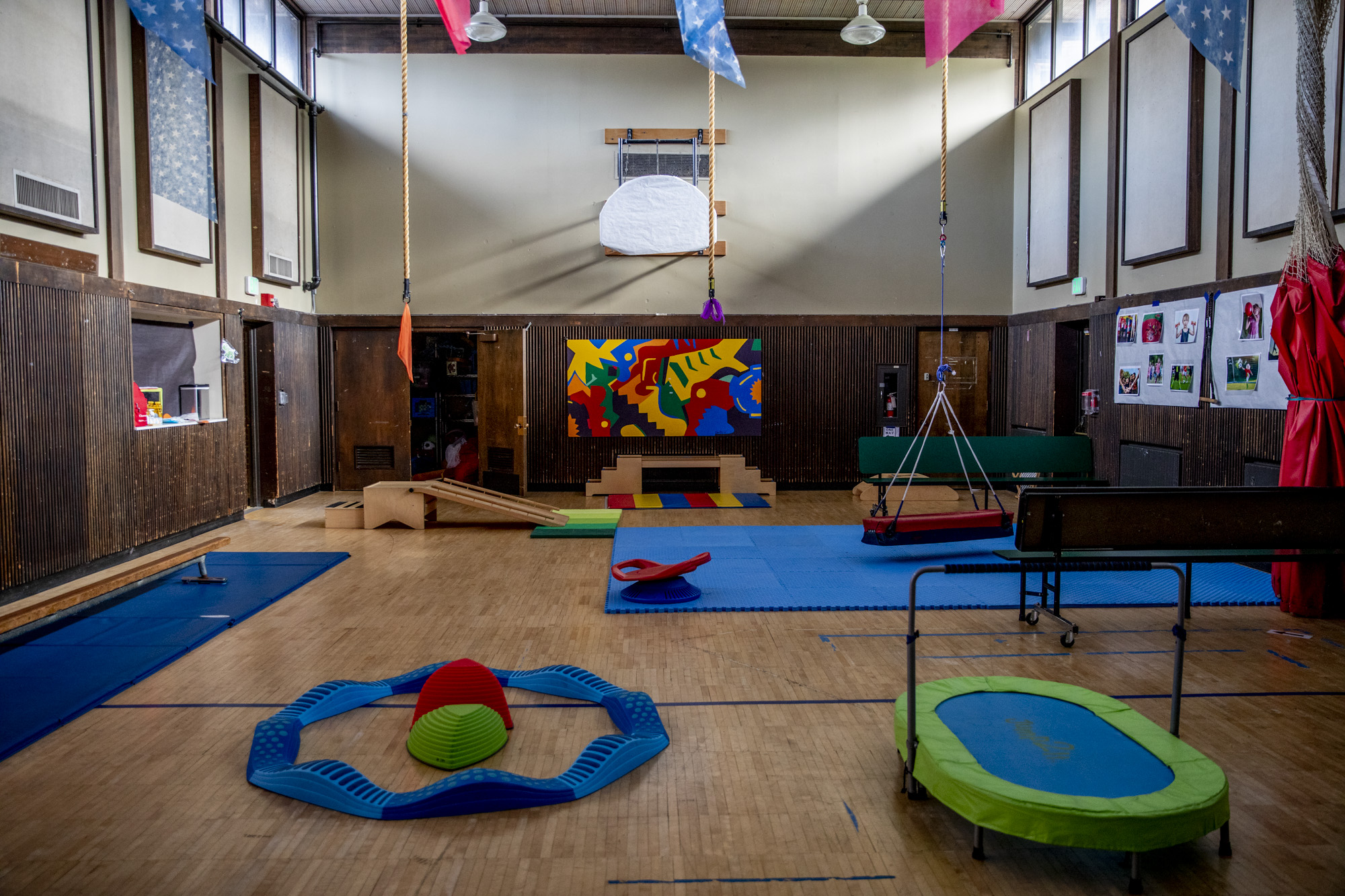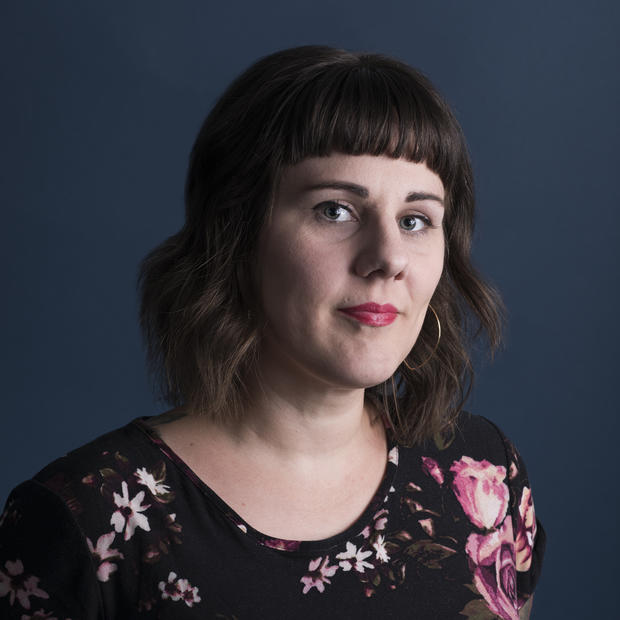Beard, a police sergeant in King County (who prefers to keep the department anonymous for her children’s privacy), would prefer her daughters to be isolated at home to reduce the chance of infection from COVID-19. But she didn’t really have a choice. Both parents are desperately needed at their jobs.
They were fortunate to find a place for their children with the YMCA of Greater Seattle. The organization has converted 13 of its King County branches and 12 off-site locations into temporary child care for any workers considered essential, such as health care staff, first responders and grocery, pharmacy and transit workers.
The cost for essential workers using the child care? Nothing. For everyone else? $45 a day.
Beard said she was also in the process of buying a house for her disabled brother to move in with her, so having access to free child care has allowed the family to breathe a little bit.
“Cash was tight and we were pretty worried about it. … They then made it free for all [essential workers],” Beard said when she found out about the YMCA’s child care. “I’m still paying my monthly Y dues. I’ll be supporting them for years because of what they’ve done for us.”
While the child care is free, Beard said that out of gratitude she still pays the YMCA about $1,000 a month, the amount she paid when she previously used its after-school child care program. While she worries for her daughters’ health, she is also concerned about depletion of staff members if they fall ill.
More coronavirus help for families: Longtime homeschool parents offer tips
But the YMCA is following stringent measures: cleaning all high-touch surfaces every two hours, ensuring that children regularly wash their hands, and having no more than 10 kids in a partitioned space.
Gwen Ichinose Bagley, the YMCA’s chief youth development officer, said the organization has the capacity to watch more than 650 children and still have some spots open. However, the program is financially viable only through the end of May, she said, as funding mainly comes out of its operations funds, with only some reimbursement from school district foundations.
Seattle Mayor Jenny Durkan recognized the need for expanded emergency child care options outside of nonprofits. She announced an emergency order March 27 for more than $1 million a month toward 75 emergency child care classrooms. Those classrooms will be spread across five facilities placed near hospitals, with 22 additional preschool sites across Seattle, and a total capacity to watch more than 700 children. All essential workers should have received a child care application through their employer. If not, they can still apply through the city.
In the week after Durkan's announcement, the King County Council approved an additional $2.2 million for free child care for essential workers. While the council said it will assist in finding options for families, many child care centers have shuttered across the state.
Child Care Aware of Washington, a nonprofit that has been tracking closures in the state, said over 1,000 child care centers — with a total capacity of more than 48,000 children — were at least temporarily closed as of April 2.
An alternative solution has cropped up: transforming closed schools into child care facilities.
During his initial announcement of school closures, Inslee called for school superintendents to provide free child care for essential workers, but school districts needed time to switch from education to child care.
In Seattle, there was some tension. After a plea for child care volunteers from Seattle Public Schools went unanswered, the district attempted to make the work mandatory. The teachers union bristled, sending a letter rejecting the plan. It claimed the plan was outside the teachers' “normal job duties” and presented “inherent health and safety risks.” The district backed off.
Other schools started opening their doors for child care in late March in Yakima, Spokane and Vancouver. Some still aren’t ready, like the Kennewick School District in the Tri-Cities, which still refers parents to the local YMCA and Boys & Girls Club for emergency child care.

One school transitioning to child care is the Experimental Education Unit at the University of Washington’s Haring Center, which provides early childhood education for children with and without disabilities, a well-respected model for inclusive education.
When the EEU shut its doors in response to Inslee’s order, it didn’t know what was next. Ilene Schwartz, director of the Haring Center, said staff members were worried about their students, but also had concerns for the staff itself, which would be without health care. The city of Seattle stepped in, redirecting contract dollars to be used for emergency child care.
The EEU has managed to keep staff members who wanted to stay — some opted out because they were at high risk for contracting COVID-19 or lived with other high-risk people — but had to reduce everyone to part-time, Schwartz said.
The center will provide child care for UW Medical Center workers, from doctors to janitorial staff. It's starting out with five classrooms serving ages 3 to 6, with eight children and two staff allowed per room. It will provide care from 7 a.m. to 6 p.m., five days a week.
More than 400 families have already expressed interest.
These parents, though, are working at jobs coming into contact with a higher number of people than those who can stay home — further putting these child care workers at risk.
“There are a lot of concerns and I think they’re realistic concerns,” Schwartz said. “We’re trying to do everything we can to keep everyone safe, but our staff are putting themselves at high risk and we know that.”
Schwartz is confident in the measures the center is taking. She said the school’s principal has come up with such a stringent health and safety plan that other child care programs are adopting its protocols, including Seattle Public Schools and other UW facilities.
Kaitlyn Hensley was in her second year at the EEU as an instructional assistant when the school closed. She has decided to stay on and work part-time as a child care worker.
Hensley said it’s strange inside the classrooms now. They look empty. No more toys or communal art supplies or books. Custodial staff members are doubling their usual amount of cleaning. Children will bring their own lunches and store their things in separate, personalized bins. Temperatures will be taken every day before entry.
Hensley said she was initially on the fence about staying on at the EEU because of the risk of contracting the virus. In the end, she decided she was comfortable with the agency’s plans and glad to be useful.
“It just puts myself and all my friends, co-workers at more of a risk of potentially getting COVID, but I personally feel the most comfortable at the EEU because of the measures taken. They’re going above and beyond,” she said. “End of the day, I’m really happy that I am somebody that can use the skills that I have, and continue to provide help in service, so other people can help some more.”

This was edited to reflect a new start date and hours from the EEU, and that over 400 had expressed interest, not applied. Kaitlyn's last named was corrected to Hensley.
Additional educational programming is available on KCTS 9.4 (WORLD Channel) and PBS Learning Media to serve teachers, home schoolers, educators of all types in this out-of-the-classroom environment. There are resources for families who are trying to figure out how to match their child’s grade level to education standards.



